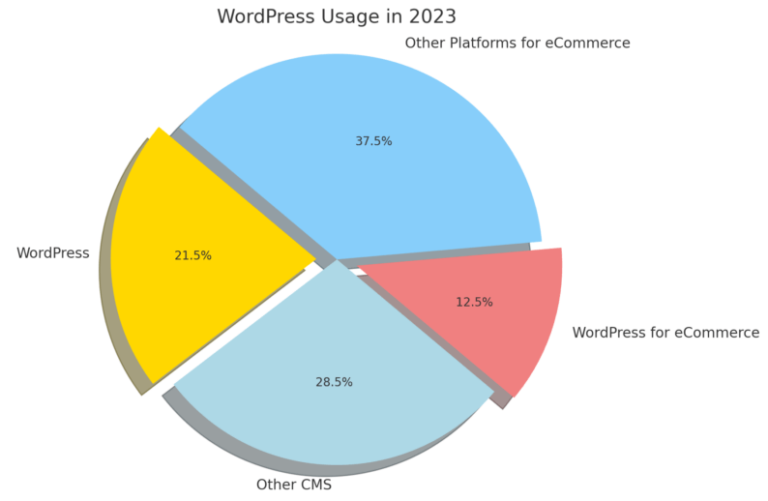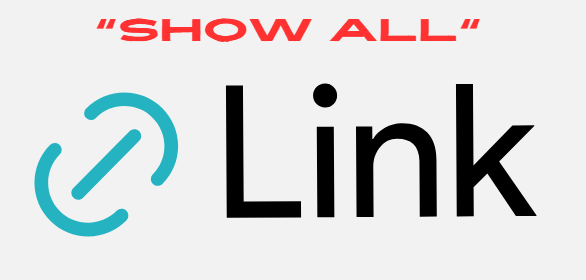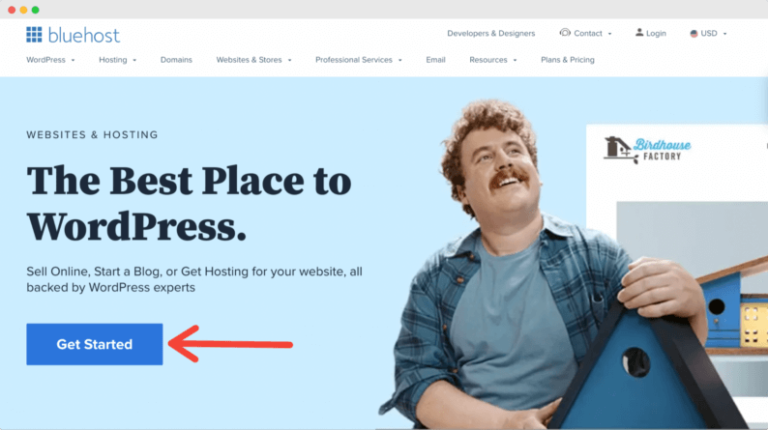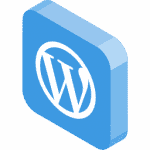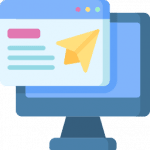Editing a WordPress site, specifically learning how to edit a WordPress site, can seem daunting to beginners, but with the right guidance, it becomes a manageable and even enjoyable task. As one of the most popular content management systems (CMS) globally, WordPress powers over 40% of all websites on the internet. Its widespread use is a testament to its flexibility, user-friendly interface, and robust capabilities.
Whether you’re a business owner looking to update your site, a blogger wanting to refresh your content, or a developer tasked with maintaining a client’s site, understanding how to effectively edit a WordPress site is essential. This article will walk you through the process step-by-step, ensuring you can make the necessary changes with confidence and ease.
We will begin by helping you get started with WordPress, from setting up your account to familiarizing yourself with the dashboard and configuring basic settings. Next, we’ll delve into customizing your site to match your vision, including choosing and installing themesA WordPress theme is a set of files that determine the design and layout of a website. It controls everything … More, using plugins to add functionality, and customizing menusIn WordPress, a menu is a collection of links that are displayed as a navigation menu on a website. Menus are … More and widgetsA widget is a small block of content that performs a specific function and can be added to certain areas of a … More. Finally, we will cover creating and managing your content, utilizing the block editor, and managing media files.
By the end of this guide, you’ll have a comprehensive understanding of how to edit a WordPress site, empowering you to make your website truly your own. So, let’s get started on this journey to mastering WordPress editing.
Getting Started with WordPress
Navigating the early stages of learning how to edit a WordPress site can be challenging, but with the right guidance, it can be a smooth and rewarding process. This section will walk you through the essentials to get your WordPress site up and running efficiently.
Logging in
Navigate to your website URL, and add /wp-admin to the end of the URL (example.com/wp-admin). This will take you to the WordPress administrator login page. The initial credentials will be set by default, often by your web hosting company. On your first login you will usually be prompted to confirm the website’s administrator email.
Understanding the Dashboard
The WordPress dashboardIn WordPress, the Dashboard is a central hub for managing a website’s content and settings. It is the first sc… More is where all the magic happens. It may look overwhelming at first, but it’s designed to be user-friendly and intuitive. Here are the key components you need to know when learning how to edit a WordPress site:
- Admin Menu: Located on the left-hand side, this menu provides access to all the major sections of your site, including PostsA post is a type of content in WordPress, a popular open-source content management system used for creating an… More, PagesIn WordPress, a page is a content type that is used to create non-dynamic pages on a website. Pages are typica… More, Media, Appearance, Plugins, Users, Tools, and Settings.
- Toolbar: The toolbar at the top of the screen offers quick links to frequently used actions, such as creating new posts or pages, viewing your site, or accessing your profile.
- Main Workspace: The center of the dashboard is your main workspace, where you’ll see an overview of your site’s activities, including recent posts, commentsComments are a feature of WordPress that allow users to engage in discussions about the content of a website. … More, and site health status.

Familiarize yourself with these areas, as you’ll be spending a lot of time here.
Basic Settings Configuration
Before diving into content creation and customization, it’s crucial to configure some basic settings to ensure your site functions smoothly. Here’s a quick guide on how to edit a WordPress site settings:
- General Settings: Navigate to Settings > General. Here, you can set your site title, tagline, URL, email address, and timezone.
- PermalinksIn WordPress, a permalink is a permanent URL that points to a specific post or page on a website. It is the we… More: Go to Settings > Permalinks to choose how your URLs are structured. The “Post name” option is recommended for SEO-friendly URLs.
- Reading Settings: Under Settings > Reading, you can decide whether your homepage displays your latest posts or a static page. You can also set how many posts are shown per page.
- Discussion Settings: Found under Settings > Discussion, these settings control how comments are managed on your site. You can enable or disable comments, set moderation rules, and manage notifications.
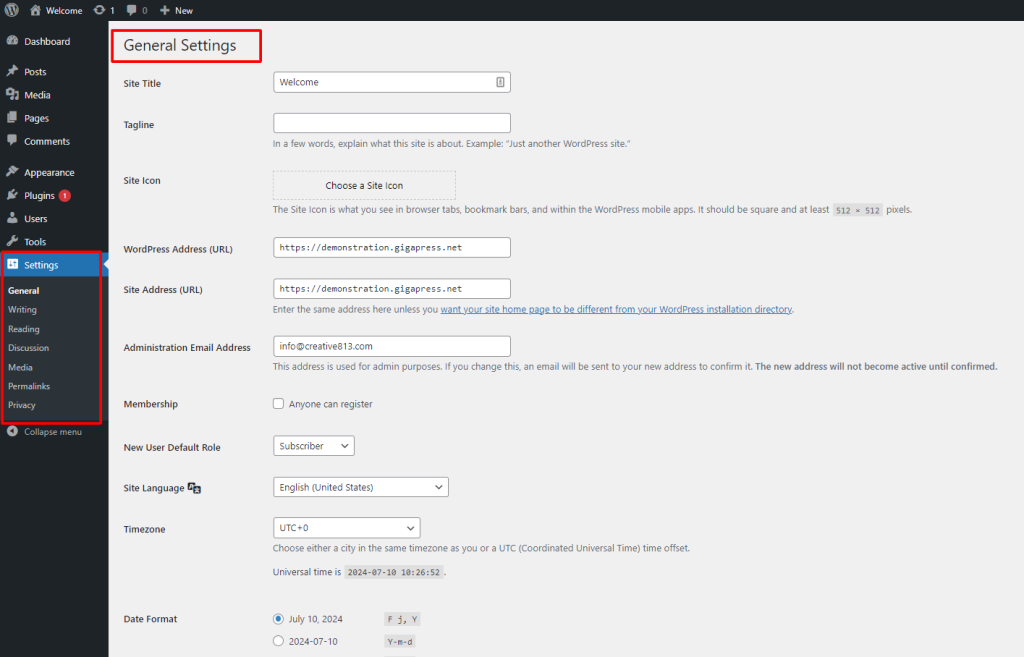
By properly setting up your account, understanding the dashboard, and configuring the basic settings, you’ll lay a solid foundation for your WordPress site. Once these initial steps are completed, you’ll be ready to move on to more advanced customization and content management.
Customizing Your Site
Customizing your WordPress site is where you can truly make it your own. From selecting the perfect theme that aligns with your brand to adding plugins that enhance functionality, this is the stage where your website starts to take shape and stand out. Here’s a comprehensive guide to customizing your WordPress site effectively and learning how to edit a WordPress site to fit your needs.
Choosing and Installing Themes
The theme of your website sets the overall look and feel, acting as the first impression for your visitors. WordPress offers a plethora of free and premium themes catering to various niches and design preferences.
- Accessing Themes: Navigate to the “Appearance” section on your dashboard and click on “Themes”. Here, you can browse through available themes.
- Previewing Themes: Before committing, use the “Live Preview” option to see how a theme will look with your content.
- Installing and Activating Themes: Once you find a theme you like, click “Install” and then “Activate” to apply it to your site. Premium themes may require you to upload a theme file manually.
- Customizing Themes: Use the “Customize” option under the “Appearance” menu to tweak elements such as colors, fonts, and layouts to better fit your brand.
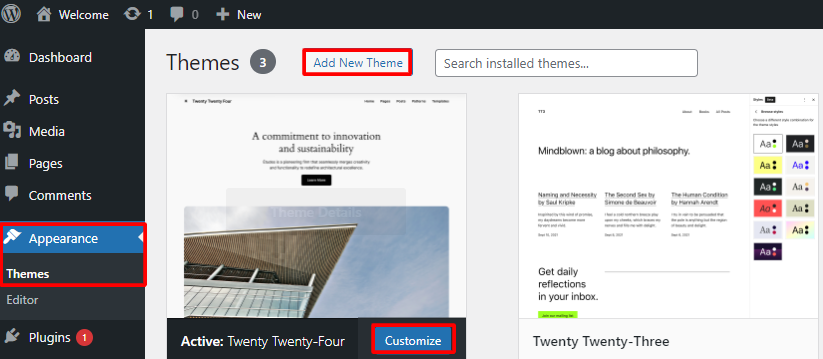
Using Plugins for Added Functionality
Plugins are essential for adding new features and extending the functionality of your WordPress site without needing to code. Whether you want to improve SEO, enhance security, or add contact forms, there’s likely a pluginA plugin is a software component that adds specific features and functionality to your WordPress website. Esse… More for it.
- Finding Plugins: Go to “Plugins” in your dashboard and click “Add New”. Here, you can search for plugins by name or functionality.
- Installing Plugins: Once you find a plugin that suits your needs, click “Install Now” and then “Activate”.
- Managing Plugins: Keep your plugins updated to ensure compatibility and security. Delete plugins you no longer use to keep your site running smoothly.
- Recommended Plugins: Consider essential plugins like Yoast SEO for search engine optimization, Akismet for spam protection, and WooCommerce if you’re running an e-commerce store.

Customizing Menus and Widgets
Menus and widgets play a crucial role in the navigation and functionality of your site. They help visitors find information quickly and interact with your content easily. Knowing how to edit a WordPress site involves mastering these elements.
- Creating Menus: Go to “Appearance” > “Menus” to create and manage your site’s menus. You can add pages, posts, custom links, and categoriesIn WordPress, categories are a fundamental taxonomy used to group and organize posts based on their topics or … More to your menu. Drag and drop to arrange them in the desired order.
- Assigning Menus: Assign your created menu to various locations on your site, such as the primary navigation bar, footer, or sidebar.
- Adding Widgets: Widgets are small blocks that add content and features to your sidebar, footer, and other widget-ready areas. Access them via “Appearance” > “Widgets”.
- Popular Widgets: Commonly used widgets include the search bar, recent posts, categories, and social media links. Drag and drop widgets to your desired widget area, and customize their settings as needed.
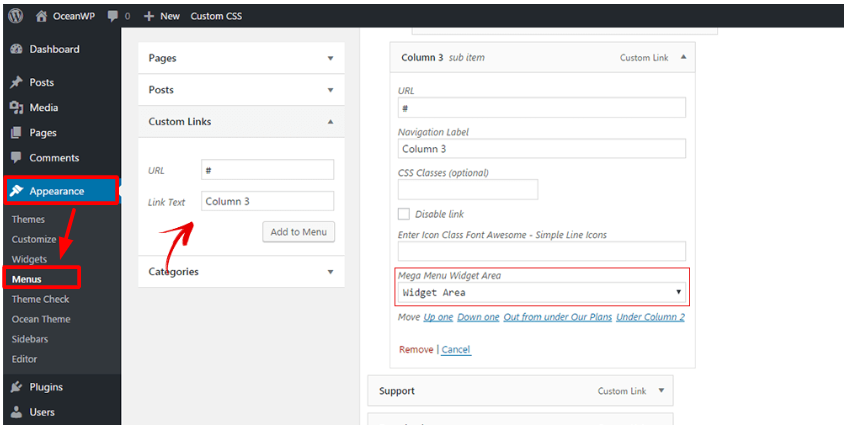
By carefully selecting and customizing themes, plugins, menus, and widgets, you ensure that your WordPress site not only looks great but also provides a seamless and engaging user experience. These customizations are key to building a site that meets your specific needs and goals.
Creating and Managing Content
Creating and managing content is at the heart of any WordPress site. Whether you are running a blog, an e-commerce store, or a portfolio, your content is what will engage your visitors and keep them coming back. This section will guide you through the essential steps for creating and managing content on your WordPress site and show you how to edit a WordPress site effectively.
Creating Pages and Posts in How to Edit a WordPress Site
WordPress distinguishes between two main types of content: pages and posts. Understanding the difference between them is crucial for effective content management.
Pages
Pages are static and timeless content pieces like your About Us, Contact, or Services pages. They are not part of your blog and don’t appear in the chronological order of your posts.
- Creating a Page:
- Navigate to your WordPress dashboard.
- Click on “Pages” and then “Add New.”
- Enter a title and use the content editor to add the desired text, images, or other media.
- Once you’re satisfied with your content, click “Publish.”

- Editing a Page:
- Go to “Pages” in your dashboard.
- Select the page you wish to edit.
- Make your changes and click “Update” to save.

Posts
Posts are timely content entries listed in reverse chronological order on your blog. They are ideal for news updates, articles, or blog entries.

- Creating a Post:
- Navigate to “Posts” and then “Add New.”
- Enter a title and use the WordPress block editor to add your content.
- Assign categories and tagsIn WordPress, tags are a taxonomy used to classify and organize posts. They are similar to categories, but unl… More to organize your post.
- Click “Publish” when you’re ready to go live.
- Editing a Post:
- Go to “Posts” in your dashboard.
- Select the post you want to edit.

- Make the necessary changes and click “Update.”
Using the Block Editor for Editing a WordPress Site
The WordPress block editor, also known as GutenbergGutenberg is the name of a modern WordPress editor that was introduced with the release of WordPress 5.0 in De… More, is a powerful tool that allows you to create rich content layouts without needing to know any code.
- Understanding Blocks:
- Each piece of content (paragraph, image, video, etc.) is a block.
- Blocks can be added, moved, and customized individually.
- Adding Blocks:
- Click on the “+” icon in the editor to add a new block.
- Choose from a variety of blocks such as paragraphs, headings, images, videos, lists, and more.
- Customizing Blocks:
- Each block has its own settings, accessible by clicking on the block and using the sidebar options.
- You can adjust alignment, add custom CSS, change background colors, and more.
- Reusable Blocks:
- If you have a block or group of blocks you use frequently, you can save them as reusable blocks.
- To do this, select the block(s), click on the three dots in the block toolbar, and choose “Add to Reusable Blocks.”
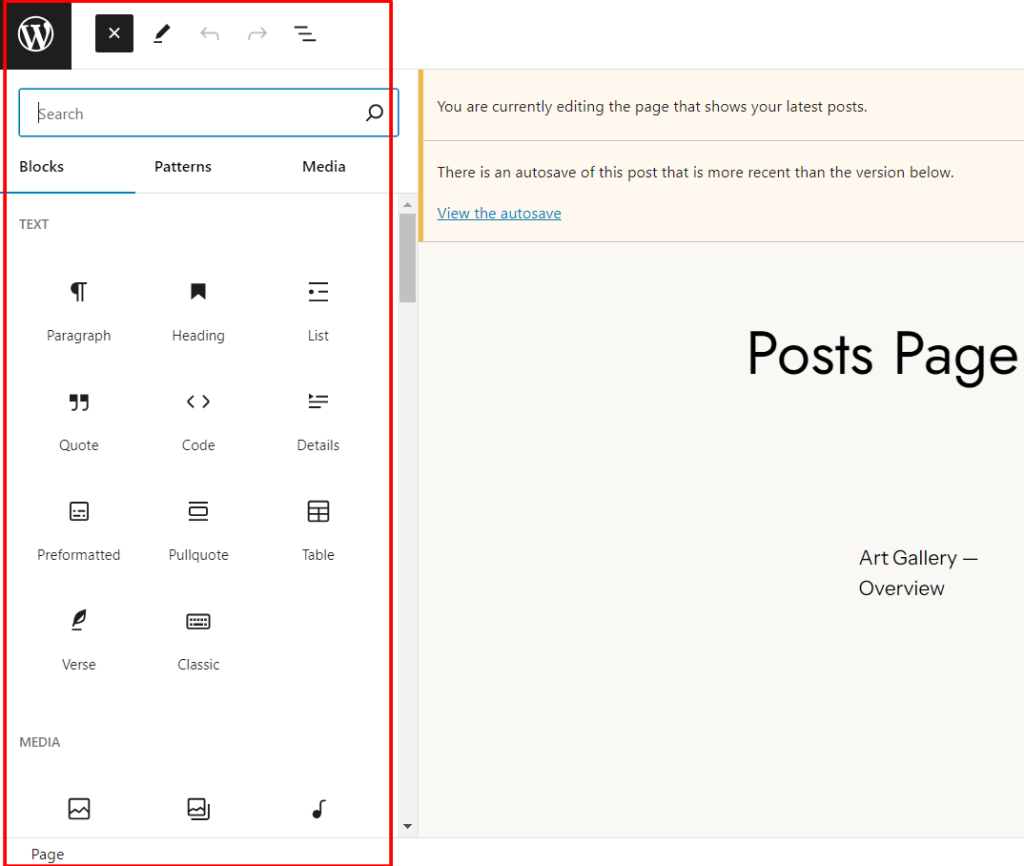
Managing Media Files in How to Edit a WordPress Site
Media files, such as images, videos, and documents, play a critical role in enhancing your content and making it more engaging.
- Uploading Media:
- Navigate to “Media” in your dashboard and click “Add New.”
- Drag and drop your files or select them from your computer.

- Inserting Media into Content:
- When editing a post or page, you can add media by clicking on the “Add Media” button.
- Select the file from your media libraryThe Media Library in WordPress is a feature that allows users to easily upload and manage media files such as … More or upload a new one.

- Organizing Media:
- Use the media library to organize your files. You can add titles, captions, alt text, and descriptions to make them easier to find and improve SEO.
- Editing Media:
- Click on any media file in the library to edit it. You can crop, rotate, scale, and flip images directly within WordPress.
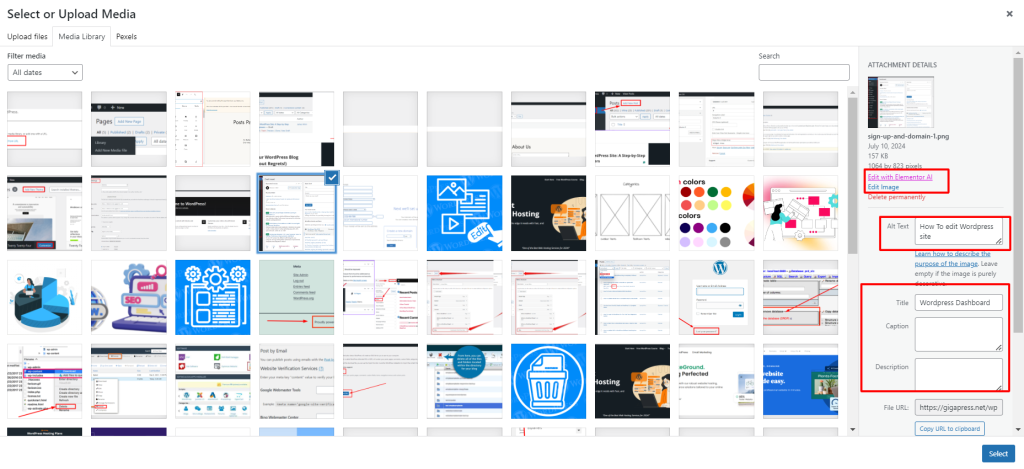
By mastering these elements and learning how to edit a WordPress site effectively, you can create and manage content that not only looks professional but also serves to engage and inform your audience effectively.
Conclusion On How to Edit a WordPress Site
Editing a WordPress site may initially seem daunting, but with a structured approach, it becomes an intuitive and rewarding process. From setting up your account and configuring the basic settings to customizing your site with themes and plugins, each step plays a crucial role in shaping your website to meet your unique needs. Understanding the WordPress dashboard and leveraging its powerful tools, such as the block editor and media management system, empowers you to create and manage content efficiently.
As you grow more familiar with WordPress and how to edit a WordPress site, you’ll find that its flexibility and extensive range of customization options provide endless possibilities for your site. Whether you’re building a personal blog, a business website, or an online portfolio, mastering the basics outlined in this guide will set a solid foundation for your journey. Remember, practice and experimentation are key. Don’t hesitate to explore advanced features and seek out additional resources and community support as you continue to refine your WordPress site.
If you’re eager to learn how to edit a WordPress site effectively and want reliable WordPress hosting with automatic updates, explore our hosting packages by clicking the button below!
